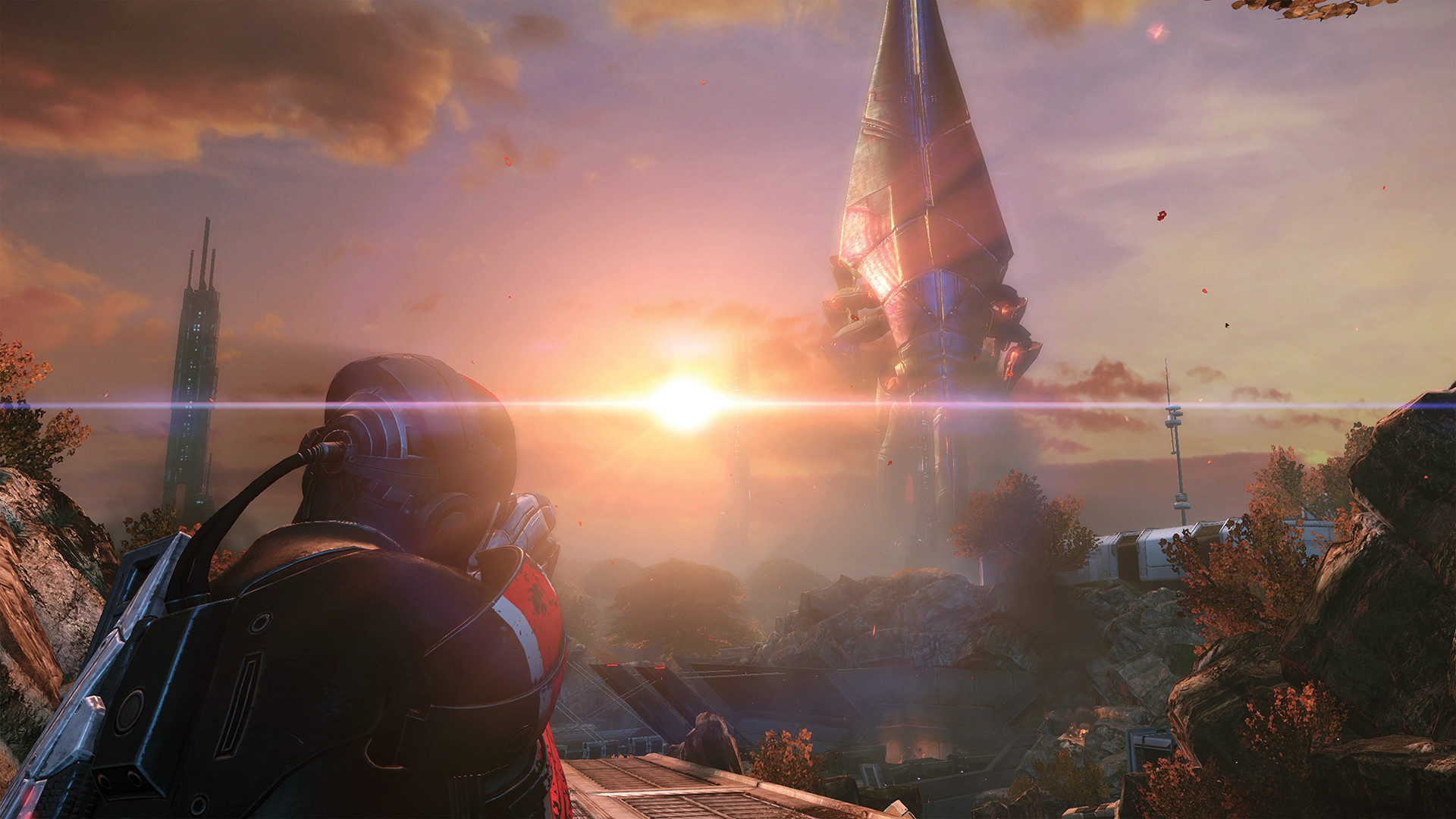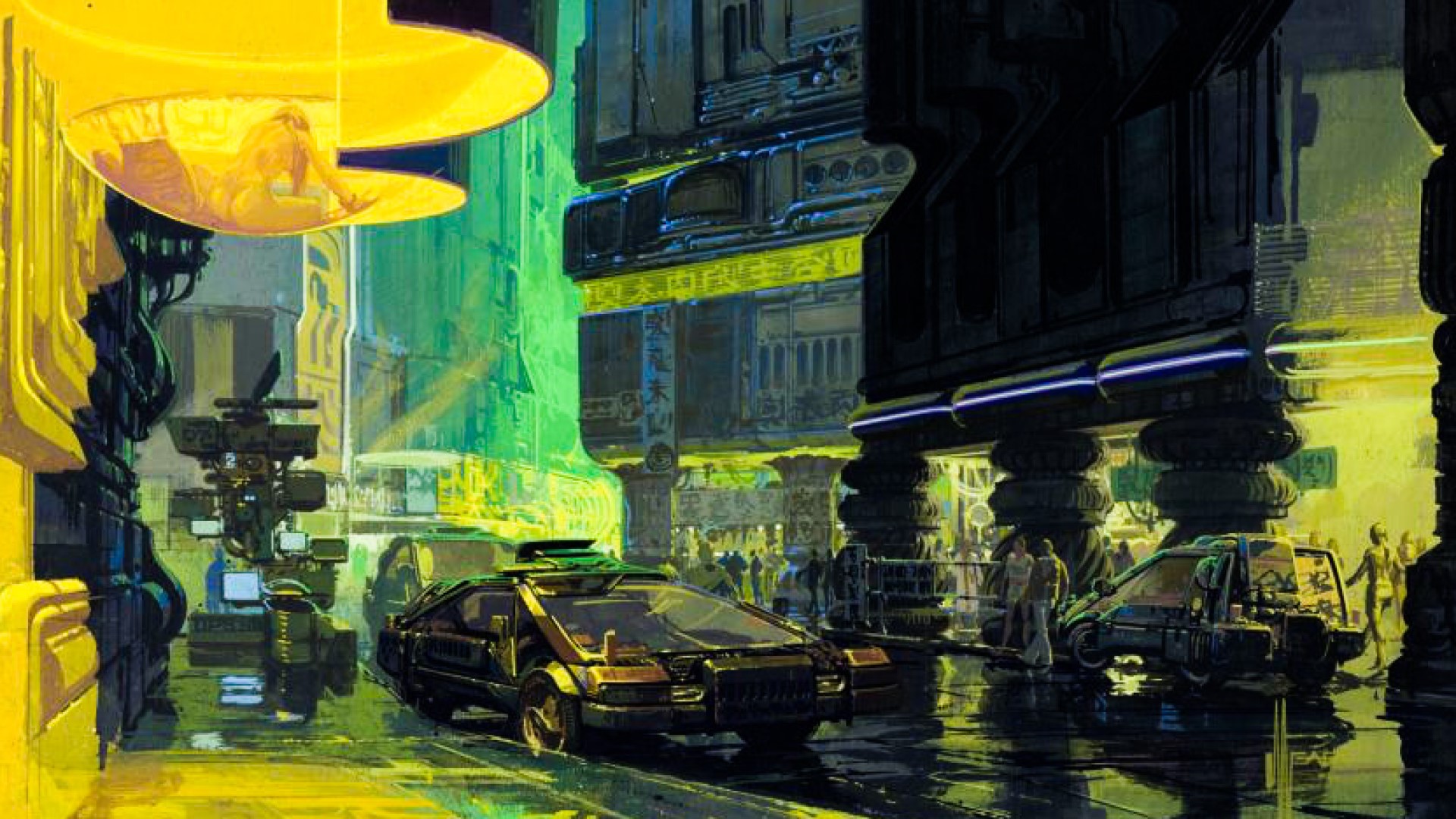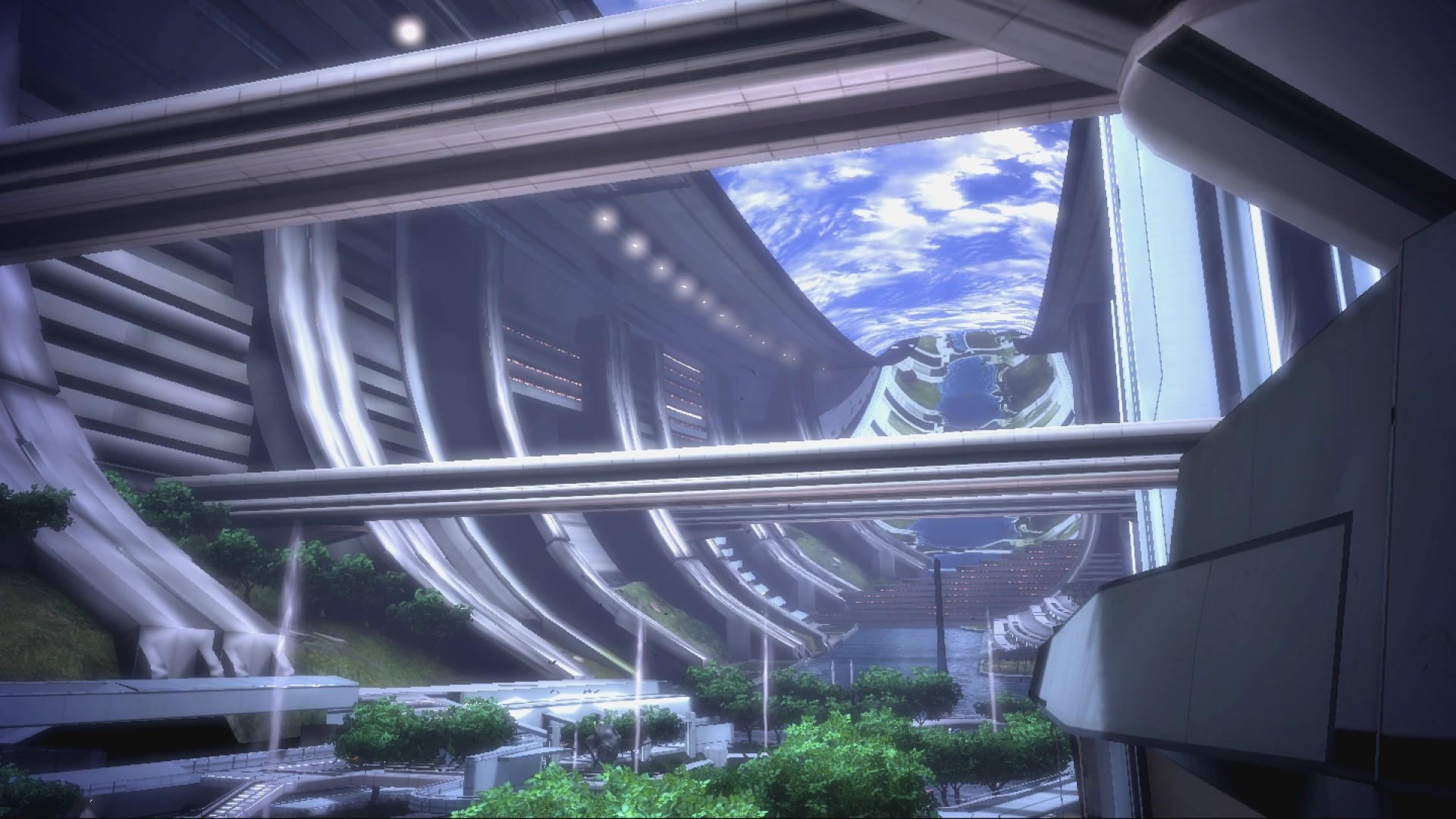Mass Effect’s gorgeous sci-fi style can trace itself back to a titan of the artistic world
New Mead-ia

Mass Effect is, fundamentally, a futurist work. In as much as the games concern themselves with difficult political realities and tough moral quandaries, they do present a fairly optimistic vision of the future. The humans of Mass Effect have eradicated most diseases, travel around in glorious sky cars, and live to about 150. The Citadel itself, the vast space station at the center of galactic life, acts as a cosmopolitan melting pot, where different species rub shoulders beneath neon lights, hyper-clean architecture, and artificial skies.
However, the distinctive skyscrapers and striking geometric forms and shapes of the Mass Effect universe didn’t simply come out of nowhere. As with any great artistic project, Bioware drew on what came before.
In an interview with Dark Horse comics way back in 2012, Mass Effect series art director Derek Watts made it clear that the artist that influenced them “the most” was futurist Syd Mead. While Mass Effect also drew inspiration from artists including Doug Chang, Ralph McQuarrie, and Joe Johnson, it was Mead whose work was front and center when it came to building the series' distinctive aesthetic.
Mead effect

Syd Mead passed in 2019, but his distinct neo-futurist style oozes from Mass Effect’s every frame.
Rather than simply placing a forward-looking twist on modern design, neo-futurism pushes further, adding alien curves and shapes to buildings and cities while rethinking how they might be constructed from the ground up. Geometric lines, sweeping curves, and hard landscaping all play a role in creating this distinctive and eye-catching art style.
From the Citadel space station to the starship Normandy and even the Mako assault vehicle, Mead’s sleek and pleasing style is almost ubiquitous in Mass Effect. Also responsible for the iconic visual styles of iconic films like Tron, Aliens, and Blade Runner, Mead has left an indelible mark on popular culture - a mark that would influence BioWare's sci-fi epic in a big way.
Scratch the idyllic surface of the Citadel and you find a place beset by corruption
However, what’s most curious about Mead’s work is his range. The artist was capable of veering between utopian and dystopian visions of the future with an accomplished ease. This duality is, in many respects, what made Mead’s vision so suitable for the Mass Effect trilogy. Mass Effect is, at its core, about moral ambiguity. Choices between 'Paragon' and 'Renegade' paths for protagonist Commander Shepard underpin many of the series' main story beats, a contrast which is embedded in the universe's wider themes and locations. For instance: scratch the idyllic surface of the Citadel and you find a place beset by corruption and racism. This much is obvious from as early on as the opening chapter of the first Mass Effect game, adding a grit that persists throughout the series as a whole.
Sign up for breaking news, reviews, opinion, top tech deals, and more.
More than meets the eye

Neo-futurism is more than purely visual, however. There is an ideological strain that runs through Mead’s work which also finds itself at home in the Mass Effect series. In the art world, neo-futurism is about moving beyond contemporary ‘technocratic’ ideas of what the future might look like and, instead, opting for a vision of the future where technology has iterated upon itself, creating avant-garde visual spectacles removed from our own understanding of what buildings and vehicles should look like.
In this spirit, the clean lines and towering skyscrapers of Mass Effect pull us forward into a barely recognizable future. Though far from impractical, in Mass Effect’s 2183, the idea of what functionality means has changed substantially. Aesthetic ideas have iterated on themselves alongside technology, making them seem especially distant from the present day.
This is why, putting the artistic jargon aside for a moment, the Normandy looks far cooler than even the most sophisticated aircraft from the real world. The Normandy isn’t just distinctive, it’s more than our modern-day design philosophies can accommodate. Mass Effect speaks its own special visual language, but this is only possible thanks to the groundwork provided by Mead and his neo-futurist approach.

All great works of sci-fi stand on the shoulders of giants. While Mass Effect clearly pushes the envelope in terms of visual design and is far from a carbon copy of Mead’s work, the extent to which Bioware built upon the efforts of the great neo-futurist is clear. Though Mead has now passed, we must honor and celebrate the influence of his work and the role it's had in shaping the games we love.
Mass Effect is iconic. The Normandy, the Mako, and the Citadel have all gone down in gaming history as some of the best sci-fi designs of the last two decades. Mass Effect offers us a world that is alien, yet practical, futuristic, yet grounded. This is the power of the Syd Mead special sauce which, when combined with the bold strokes of Bioware’s own artists, makes for one unforgettable combination.
Want more eye-popping titles? Check out our lists of the best single-player games and best story games.

An editor and freelance journalist, Cat Bussell has been writing about video games for more than four years and, frankly, she’s developed a taste for it. As seen on TechRadar, Technopedia, The Gamer, Wargamer, and SUPERJUMP, Cat’s reviews, features, and guides are lovingly curated for your reading pleasure.
A Cambridge graduate, recovering bartender, and Cloud Strife enjoyer, Cat’s foremost mission is to bring you the best coverage she can, whether that’s through helpful guides, even-handed reviews, or thought-provoking features. She’s interviewed indie darlings, triple-A greats, and legendary voice actors, all to help you get closer to the action. When she’s not writing, Cat can be found sticking her neck into a fresh RPG or running yet another Dungeons & Dragons game.